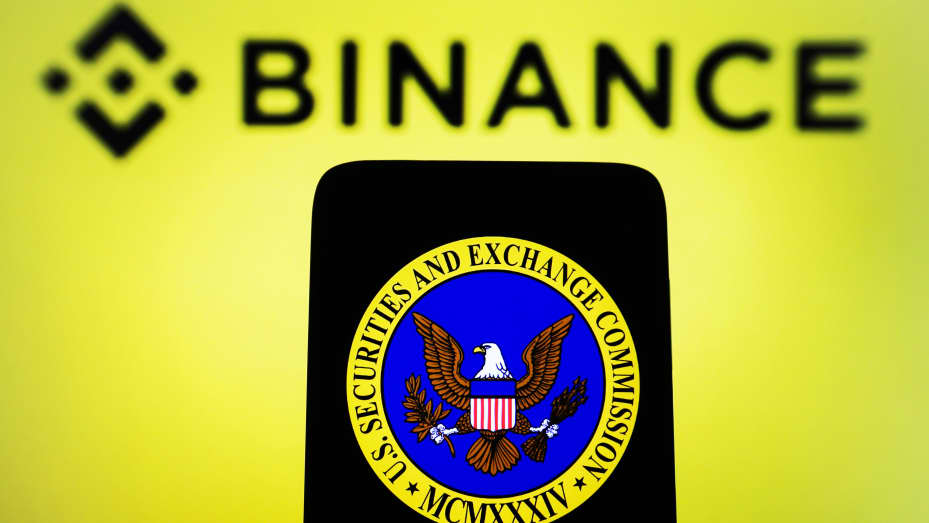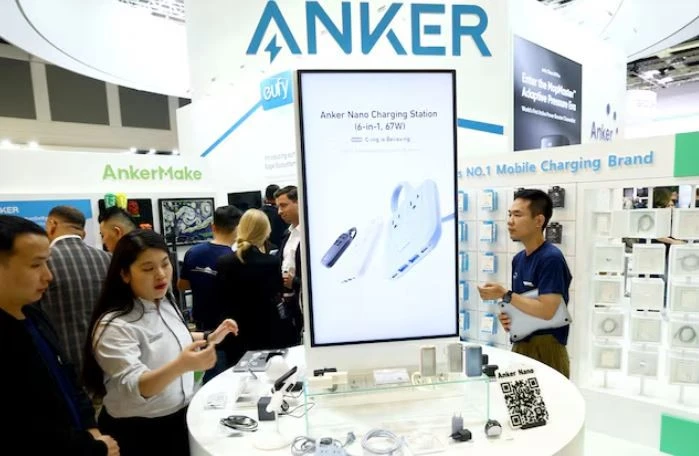According to Cointelegraph , the allegations focus on Binance misleading investors about risk controls, falsifying trading volumes, concealing key operational data, and violating U.S. securities laws. To avoid regulatory scrutiny, Binance created weak controls and failed to comply with them to retain U.S. customers.
Unregistered Securities Offering
SEC Chairman Gary Gensler said Changpeng Zhao (CZ) has operated Binance.com and Binance.US as an exchange, broker, and dealer since July 2017. The SEC’s complaint claims Binance has earned at least $11.6 billion through various methods, including trading fees collected from U.S. customers.
The regulator said Binance.com must register as a clearinghouse, broker-dealer, and exchange, while Binance.US and BAM Trading must register as clearinghouses and exchanges, respectively. Additionally, BAM Trading is accused of offering and selling a staking program as a service without being registered and is required by the SEC to register as a broker-dealer.
Controversial Practice of Allowing US Customers to Use Binance.com
In 2017, CZ launched Binance in Shanghai, China, but the exchange has been evasive about where its headquarters are. Binance’s parent company is based in the Cayman Islands, making its organizational structure more complicated. The SEC said that despite Binance’s public statements banning US customers from accessing Binance.com since June 2019, the exchange has been surreptitiously allowing Americans to continue using the platform, demonstrating a deliberate disregard for US securities laws. Not only that, Binance also created a large number of accounts for customers who had provided KYC (know your customer) procedures. Based on IP addresses and other information, some users accessing the platform are believed to be from the US.
CZ is in control
Binance and BAM Trading announced a partnership in 2019 to launch Binance.US, a separate platform that only serves U.S. customers. Contrary to Binance.US's claims of operating independently, the SEC asserted that CZ remains primarily responsible for the company.
According to the SEC, CZ ordered Binance.US to include Sigma Chain and Merit Peak as market makers, both of which are notably run by Binance employees. Merit Peak is said to have provided decentralized trading services on behalf of Binance. On the Binance.com platform, Merit Peak acts as a counterparty to users and on the Binance.US platform, it provides market making services.
Since at least 2021, Binance entities controlled by CZ have been transferring billions of dollars worth of customer assets to US bank accounts held by Merit Peak. The funds were then transferred to Trust Company A (a New York limited-purpose trust company). The transaction is believed to be related to the issuance of the stablecoin Binance USD (BUSD). Multiple Binance.US bank accounts, including one with US customer funds, have their back office head as the primary operator. This has raised questions about the transparency of Binance’s operations and the distribution of funds.

Despite Pressure from SEC, Binance Says It’s Ready to Fight the Allegations
Wash trading on Binance.US platform
Wash trading is the process where a trader sells and buys the same asset multiple times to manipulate the market.
The SEC alleges that BAM Trading and BAM Management misled both customers and equity investors about the effectiveness of their market surveillance and measures to identify and prevent manipulative trading on the platform. However, wash trading on the Binance.US platform is widespread.
Even before the platform launched, senior officials and employees at BAM Trading were well aware of the potential for wash trading. In a letter to BAM’s CEO and senior executives at Binance, Binance’s co-founder and head of the order matching engine expressed concerns about the possibility of the transaction processing system allowing customers to trade against themselves.
A significant proportion of wash trading occurred through accounts connected to Sigma Chain. Many of the Sigma Chain accounts that were active on Binance.US were affiliated with BAM Trading and BAM Management. Wash trading continued between Sigma Chain accounts after the platform was introduced in 2019 until at least June 2022. The SEC said that Sigma Chain quickly engaged in wash trading after COTI was introduced on the Binance.US platform on April 6, 2022. Strategically, platform launches, new securities offerings, and funding rounds all fell during periods of greatest investor vulnerability.
Diversion of assets and misuse of client funds
CZ and Binance were accused by the SEC of diverting customer assets to Sigma Chain. The agency claims that Merit Peak and Sigma Chain were used to move tens of billions of dollars between Binance, Binance.US, and other connected entities. Notably, the SEC revealed that Sigma Chain spent $11 million to buy a yacht.
Additionally, the SEC alleges that Merit Peak’s U.S. bank account was used as a remittance account to receive approximately $20 billion from both Binance platforms, including customer funds. Merit Peak is alleged to have transferred the majority of these funds to Trust Company A for the purpose of purchasing BUSD. The undisclosed transfer of consumer funds creates a significant risk of loss or theft. The extent of the alleged misappropriation of funds and diversion of customer assets will be further examined as the investigation progresses.
Source link


![[Photo] Looking back at the impressive moments of the Vietnamese rescue team in Myanmar](https://vstatic.vietnam.vn/vietnam/resource/IMAGE/2025/4/11/5623ca902a934e19b604c718265249d0)




![[Photo] "Beauties" participate in the parade rehearsal at Bien Hoa airport](https://vstatic.vietnam.vn/vietnam/resource/IMAGE/2025/4/11/155502af3384431e918de0e2e585d13a)























![[Photo] Summary of parade practice in preparation for the April 30th celebration](https://vstatic.vietnam.vn/vietnam/resource/IMAGE/2025/4/11/78cfee0f2cc045b387ff1a4362b5950f)



























































Comment (0)